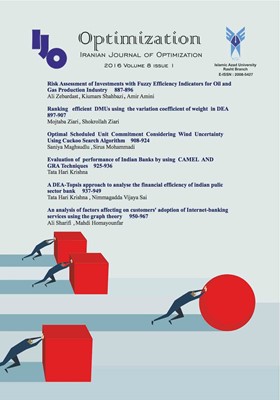ارزیابی ریسک سرمایه گذاری با شاخص های بهره وری فازی برای صنعت نفت و گاز
Subject Areas : Mathematical EngineeringAli Zebardast 1 , Kiumars Shahbazi 2 , Amir Amini 3
1 - Department of Economic, Faculty of Economic and Management, Urmia University, Urmia, Iran
2 - Department of Economic, Faculty of Economic and Management, Urmia University, Urmia, Iran
3 - MSc. Graduate of Industrial Engineering, Alghadir institute of higher education, Tabriz, Iran
Keywords:
Abstract :
در فرآیند تصمیم گیری سرمایه گذاری، در کنار شاخص های مالی بسیاری از جنبه های دیگر از پروژه های سرمایه گذاری به طور فزاینده ای اغلب در نظر گرفته میشود. این امر منجر به ارزیابی چند معیاری از یک پروژه میشود. مزایا روش های چند معیاری، توانایی برای در نظر گرفتن تمامی جنبه های جذابیت یک پروژه سرمایه گذاری است (نه تنها بخش مالی). انتخاب معیار ارزیابی پروژه باید وِیژگی سازمانی را تصمیم گیرنده می باشد، در نظر بگیرد. همراه با روش سنتی، این مقاله رویکرد جدیدی برای ارزیابی ریسک را بر اساس هر معیار توصیف پروژه های سرمایه گذاری در بهره برداری منابع هیدروکربنی معرفی میکند.


